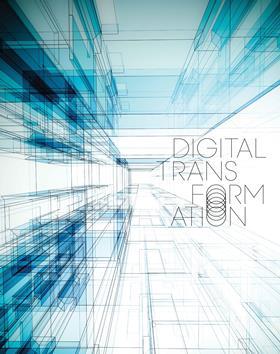As the post-digital generation comes of age, embracing technology’s potential to transform the workplace will help construction win the talent battle

A very rare event occurred in my house recently. Much to their own surprise and due to events outside our control, my daughter and son were momentarily detached from their various digital devices and we found ourselves having what I can only describe as a “conversation”.
With talk of school and university choices swirling, the talk soon turned to how and why I had chosen my career path.
A paraphrased summary of the quick-fire Q&A session went as follows:
Q: How did you choose your job? Do you enjoy it? Isn’t it dirty and dangerous? We think we’d rather see if we can become overnight YouTube sensations in the short term, if that’s all right with you?
A: Once I realised I was unlikely to make it as a footballer, a rock star or an author, I took Nana and Grandpa’s advice and found an industry that looked exciting from the outside with the potential to make a big difference and improvements to people’s lives. I really enjoy it and I wish more parents, teachers and careers advisers more readily pointed the next generation in this direction.
It’s key that we ensure we’re fully equipped to reap the benefits and efficiencies enabled by digital technologies. This is particularly important where it will assist in securing the health, safety and wellbeing of everyone working in our industry
And then the wifi righted itself and, just like that, our exchange was over and my offspring were lost once again to the world of insta-stories and influencers.
Our chat led me to ponder on a few things. The health and safety documents I’d been looking at prior to our brief exchange included some statistics about traditional industries in 2017/18, and two statistics jumped out: 267 people died in work-related accidents last year; while
the estimated cost of workplace incidents and work-related ill health annually is £15bn.
Construction has taken huge strides in improving safety over the past 30 years and is starting to address wider health-related challenges. But alongside social, moral and corporate obligations, if we truly want those parents, teachers and career advisers to be pointing the most promising youngsters in construction’s direction, we need to up our game.
Connecting into the digital world is critical. I’m the sponsor of Morgan Sindall Construction and Infrastructure’s technology group, which focuses on health, environment, safety and wellbeing. This working group also explores areas including human factors, IT, supply chain innovation and wearable technology.
In terms of the human factors, every single person in the business and the supply chain is going through our human performance programme. This is part of our ongoing cultural development journey to ensure our people – and everyone affected by our activities – benefit from an incident-free environment. The process examines the role everyone plays in influencing culture and explores how we communicate.
Communication is of course increasingly linked to technology. On a functional level, positive interventions are being recorded on our phones and tablets and then analysed for trends and improvement measures. Our visual standards, animations and grab cards are available digitally, enabling instant “toolbox talks”. Meanwhile, use of biometric construction site access and control on all projects enables important data capture.
From a wider perspective, virtual reality and augmented reality are increasingly being used both offsite and on. At Ashmole primary school in Southgate, north London, our specialised BIM team projected their computer model onto the mechanical, electrical and public health installations on site. This enabled the project team to audit the actual build against the original design by walking through the building wearing a Hololens headset. We are now exploring how we can maximise this technology from a safety perspective.
Drones are being used very effectively to undertake detailed surveys in existing buildings within potentially hazardous environments. Meanwhile, we’re also exploring how far we can take offsite manufacturing, self-driving vehicles, bricklaying robots and the like, while ensuring the safety of everyone involved.
In what feels like a truly futuristic twist, exoskeletons, metal frames that multiply the wearer’s strength, are being explored for lifting activities with the intention of reducing injuries. Other wearable technology applications such as digitally enabled wristbands, anti-dozing callers, lone worker alerting and responsive clothes are also becoming increasingly commonplace.
It’s an incredibly exciting time to be working in the sector, and it’s key that we take a positive, proactive approach and ensure we’re positioned and fully equipped to reap the benefits and efficiencies enabled by digital technologies. This is particularly important where it will assist in securing the health, safety and wellbeing of everyone working in our industry. No matter how exciting or revolutionary new technologies may be, designing out the risk or potential hazard will rightly always be the key priority.
The added benefit of such an approach is that it helps the industry demonstrate to the next generation of digitally engaged talent that we are a future-focused industry that is evolving and adapting, and offering an exciting and stimulating place to work.
After all, the world only needs a limited number of overnight YouTube sensations.
Sean Bradley is managing director of Morgan Sindall Construction’s London and Home Counties region

Look online next week for our digital supplement with the latest tech trends:

Digital futures and managing risks - Top 150 Contractors
4th July – Bloomsbury Hotel

Achieving greater efficiency means embracing digital technologies and modern methods of construction but this requires investment, taking risks and culture change. Which innovations does the industry need to prioritise and how can it make the transition to a better future?

























No comments yet